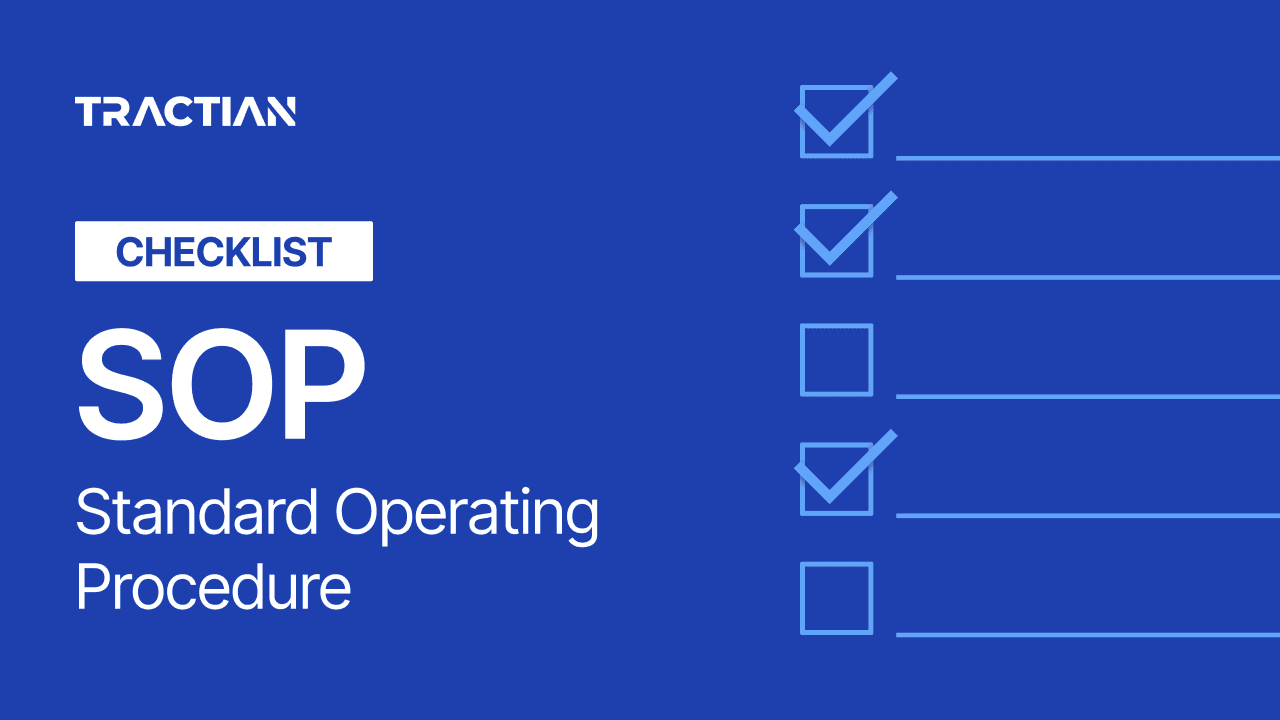Maintenance teams are being stretched past their limits. There’s not enough talent in the pipeline, open roles stay unfilled, and the few technicians still standing are forced to manage the additional work.
Regardless of your labor situation, the company’s assets aren’t waiting around. They continue to work and continue to break down. Meanwhile, plans get pushed down the line, and the work on everyone’s schedules piles up.
When a labor shortage becomes your new normal, with no strategy in place to resolve the shortage, things are only going to get worse.
Fortunately, this is precisely where a CMMS comes in. It’s a critical force multiplier that can not only help you get out of these situations but also deal with them quickly and effectively.
If you're unfamiliar with the modern CMMS, you should know it’s much more than digitizing your to-do list. A CMMS allows your team to do more with less: more uptime, more organization, and more coverage, without adding hours or headcount.
This article explains how CMMS software can help your industry deal with the labor shortage and how Tractian may be the best way to do so.
What Is a CMMS and Why It’s a Game Changer in a Labor Shortage
A Computerized Maintenance Management System (CMMS) is the operational core for maintenance teams. It consolidates everything, from work orders to asset history, inventory, and technician schedules, into one system that’s accessible in real time, on any device.
But the real value isn’t just the data storage it provides. It’s found in how it makes the work easier to execute.
Here’s how a smart CMMS empowers your teams:
- Set priorities with structured schedules and asset-criticality insights.
- Complete tasks faster through mobile execution, AI-driven checklists, and access to SOPs.
- Prevent burnout by reducing wasted time, emergency rework, and manual reporting.
In a labor shortage, the task isn’t just keeping the line running. It’s to do it without falling behind or compromising quality. That’s what the right CMMS enables: clarity, efficiency, and performance, even when resources are tight.
How a CMMS Enhances Efficiency
When your team is running lean, every task has to count. You don’t have time to chase information or play guessing games with asset health. A CMMS is primed for this type of situation. More than just software, it’s like the operational backbone helping you execute your maintenance strategy.
Now, let’s look at the CMMS from another angle to understand how it can enhance plant efficiency.
Asset Management and Compliance Reporting Without the Chaos
Instead of digging through outdated spreadsheets or maintenance binders, you get instant visibility into each machine’s history, status, and risk profile, from the last repair to upcoming PMs. It’s all there, in one place.
And when compliance comes knocking, you’re ready. The same system automatically logs and timestamps who did what, when, and how. Audits become a quick export, not a weeklong scramble.
Implementing Asset Lifecycle Management Strategies
A CMMS continuously tracks failure frequency, downtime, and cost trends, so you know which assets are pulling their weight and which ones are burning through budget and bandwidth.
It lets you shift from reactive to strategic activities: prioritize high-value machines, retire liabilities, and reallocate technician time toward what actually moves the needle.
Maximizing Equipment Uptime and Performance
For a short-staffed team, unplanned downtime hits twice as hard. It derails the schedule and drains already limited resources.
A CMMS counters that by triggering inspections, automating preventive tasks, and flagging early signs of asset drift. Your team stays ahead of issues, focusing on scheduled work instead of reacting to surprise failures.
The result is fewer firefights, smoother and more efficient shift experiences, and a visible, defined path to sustained uptime.
Cut Costs Without Cutting Corners
Maintenance budgets are under just as much pressure as headcount. A CMMS helps stretch every dollar further by allowing you to see where each one is spent.
It highlights patterns such as missed PMs, excessive emergency repairs, and duplicate purchases that silently eat away at your margins. You’ll see exactly where money is wasted and what it takes to fix it.
With clear reporting and audit trails, you can defend your spend, prove ROI, and direct your limited funds where they’ll do the most good.
Tracking Activities for Compliance Audits and Generating Regulatory Reports
Whether you're short-staffed or not, compliance audits still occur. But chasing down logs shouldn’t require pulling your top techs off the floor.
With a CMMS, generating reports for inspections, certifications, or audits takes minutes. Every action is already documented, fully traceable, and ready to export. That means no scrambling, backlogs, or risk of missed requirements.
And more importantly, no technician hours wasted on manual paperwork when they should be focused on the floor.
10 Ways a CMMS Can Help You Deal With Labor Shortage
Labor shortages come in many forms. They may be a temporary inconvenience, but they can also be a structural constraint. Regardless, assets still need to maintain uptime, inspections still need proof, and every shift must perform at its peak.
Here’s how a CMMS helps industrial teams stay effective, even when the bench is short:
1. Using Preventive Maintenance to Offset Labor Shortages
Reactive maintenance burns time (time equals money). Every unplanned failure turns into an all-hands scramble, pulling techs from priority tasks and driving up overtime.
A CMMS breaks that pattern. It automates your preventive maintenance plan, scheduling jobs, assigning technicians, and triggering alerts based on usage or condition. With this structure in place, emergencies drop, workloads stabilize, and your team gets back on offense.
2. Enhancing Technician Productivity with Mobile Access and Real-Time Data
Technicians don’t belong behind a desk. With mobile access, they stay on the floor, checking work orders, viewing manuals, updating tasks, and logging completions without backtracking.
This means fewer interruptions, more wrench time, and more jobs per shift.
Real-time sync keeps everyone aligned without status meetings, while SOPs and asset data are always a tap away.
3. Optimizing Asset Management Through Data-Driven Insights
When resources are tight, every decision matters. A CMMS surfaces the insights that help you prioritize work where it matters most. You’ll spot high-failure assets, recurring issues, and low-return activities.
This lets you reallocate labor toward high-impact work and avoid wasting effort on machines that don’t move the needle. It’s your maintenance strategy built on real-world data.
4. Maintaining Compliance and Safety Without Full Staff
Regulations don’t follow the rise and fall of labor trends. Being in a shortage doesn’t mean audits will decrease. Fortunately, a CMMS ensures nothing falls through despite the labor situation.
Inspection intervals, safety checks, and certifications are all tracked automatically. Missed steps trigger alerts, not violations. Every action is logged, and every record is audit-ready.
With fewer people on the floor, this level of control keeps compliance rock solid.
5. Simplifying Workflows
When your team is running lean, complexity becomes the enemy.
A CMMS simplifies maintenance workflows with standardized, step-by-step instructions that leave no room for ambiguity. Techs know what to do, in what order, and with which parts.
This results in faster task execution, fewer errors, and smoother onboarding.
6. Reducing Training Periods
Shadowing takes time that most of your team doesn’t have. A CMMS shortens the learning curve with digital SOPs, asset histories, and built-in guidance that new techs can follow on their own.
Instead of relying on tribal knowledge, new hires get instant access to the playbook and can contribute faster, with less risk.
7. Better Utilization of Workers
Workforce optimization starts with intelligent scheduling. A CMMS matches tasks to available technicians based on skill set qualifications, current load, and asset priority.
That means your best techs aren’t overloaded while others sit idle. Everyone operates at full capacity, and the work gets done without adding headcount.
8. Reducing Human Errors
When work orders lack detail, mistakes tend to multiply. A CMMS provides everything a technician needs in one place: procedures, parts lists, safety notes, and asset history. With the necessary information, teams experience fewer missed steps, fewer callbacks, and zero guesswork.
This kind of execution matters even more when every task must count.
9. Improving Communication
Without alignment, lean teams will fall behind. A CMMS centralizes communication, turning scattered updates into a shared, real-time view of the maintenance landscape.
No more chasing people for updates or deciphering incomplete notes. Everyone’s working from the same source of truth. A CMMS makes lean, agile teams an optimal strategy.
10. Shifting Strategies
When labor is tight, maintenance strategies have to evolve.
A CMMS drives that shift, from reactive firefighting to planned execution, from scattered knowledge to centralized insight. It supports each step in the transition, giving your team structure, clarity, and control.
This isn’t just about surviving a labor shortage. It’s about building a smarter, more resilient operation that runs stronger no matter the headcount.

Using Analytics to Optimize Scheduling and Workflows
When technician hours are limited, every inefficiency becomes a liability. A CMMS equipped with analytics doesn’t just track performance, but exposes where your operation is bleeding time and attention.
This is not something that spreadsheets can do. A CMMS gives you system-wide visibility.
CMMS analytics show:
- Which assets are dragging down MTBF (Mean Time Between Failures), demanding repeated interventions.
- Where MTTR (Mean Time to Repair) is consistently higher than expected, indicating gaps in SOPs, parts access, or training.
- How often tasks get rescheduled, delayed, or paused, surfacing workflow bottlenecks tied to planning, approvals, or parts availability.
This clarity changes how you assign work. Instead of relying on rotation or gut feeling, you deploy techs where their time delivers the greatest return, whether critical assets, high-risk systems, or recurring failure points.
For example, if one compressor eats 30% of maintenance hours due to recurring bearing issues, the data flags it, and you can reroute PM resources to prevent repeat breakdowns or replace the unit entirely based on its long-term drain.
We’re not talking about tracking KPIs for the sake of reporting. Rather, use them to drive operational decisions that directly reduce labor strain and increase asset reliability.
When you’re short on staff, the last thing you need is reactive maintenance disguised as routine. Analytics help break that cycle, turning raw data into strategic deployment.
Examples of Transforming Maintenance With CMMS in Healthcare
Healthcare facilities can’t defer maintenance. Every asset on the floor, from life-support equipment to diagnostics, must run flawlessly, regardless of team size. When the number of qualified technicians shrinks, the margin for error disappears.
This is where a CMMS specifically designed for the medical environment becomes essential. Here’s what we mean:
1. Reducing Errors in Biomedical Maintenance
Even experienced technicians risk skipping steps or forgetting documentation when staff are overloaded. In biomed, any and every slip-up can potentially be a severe liability.
A CMMS enforces repeatability through digital checklists, structured workflows, and centralized logs that guide the tech through every task and can record details as they go. Even with less experienced staff or high workloads, the process remains standardized.
For critical equipment like ventilators or infusion pumps, this structure eliminates ambiguity and ensures that safety protocols and compliance steps aren’t just remembered, they’re built into the system.
2. Extending Equipment Lifespan in Healthcare Facilities
In hospitals, asset reliability isn’t just about avoiding downtime, it’s about protecting capital. With fewer biomed professionals on staff, every repair needs to count. A CMMS helps by triggering preventive maintenance based on actual equipment use, not fixed intervals.
It also surfaces repair history and usage patterns that support smarter decisions: when to fix, when to retire, and when a part is likely to fail again.
With better visibility into equipment performance, maintenance leaders stretch asset lifespan without gambling on safety or reliability. This is especially valuable in hospitals managing large, varied equipment fleets under regulatory pressure.
Moving Forward With Fewer Technicians and Higher Uptime
The current labor shortages aren’t a blip, they’re the new baseline. But that doesn’t mean your team performance has to decline. Though it does mean shifting the focus from adding headcount to optimizing how the current team operates.
A well-implemented CMMS makes this transformation simple. And on top of a CMMS operating as the backbone for your assigned tasks, technicians are equipped with the data and structure to complete them faster, with fewer errors.
Maintenance becomes proactive. Training becomes faster. And decision-making moves from reactive guessing to data-backed action.
Across industries, this shift is already happening. Teams are reducing downtime, increasing throughput, and improving compliance, with fewer people and fewer emergencies. The difference isn’t the size of the team. It’s the system that supports them.
How Tractian's CMMS Helps You With Labor Shortage
Tractian's CMMS was built specifically for maintenance teams facing today's labor challenges. It deploys quickly, requires minimal training, and focuses on practical, real-world maintenance workflows rather than theoretical ideals.
It's for teams that are understaffed, overtasked, and still expected to deliver uptime without compromise.
The platform deploys fast, with minimal friction. Its mobile-first interface lets technicians stay in the field, completing work orders, logging tasks, and accessing SOPs without breaking stride. That means more jobs finished per shift, without burnout or workarounds.
For planners and supervisors, everything becomes visible. Real-time data shows what’s done, what’s delayed, and where resources are stretched. Tasks get assigned based on asset criticality, technician availability, and actual workload, instead of guesswork.
And because the system captures everything automatically-downtime trends, PM compliance, failure history-you don’t just stay afloat with fewer people. You build a leaner, smarter operation that performs under pressure.


